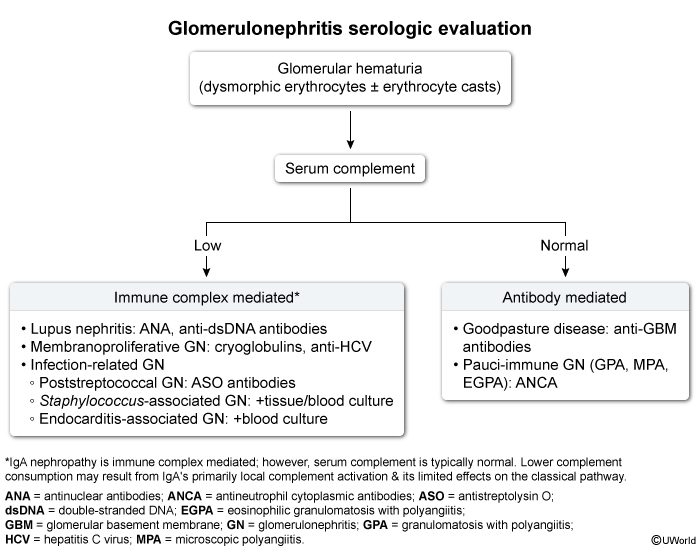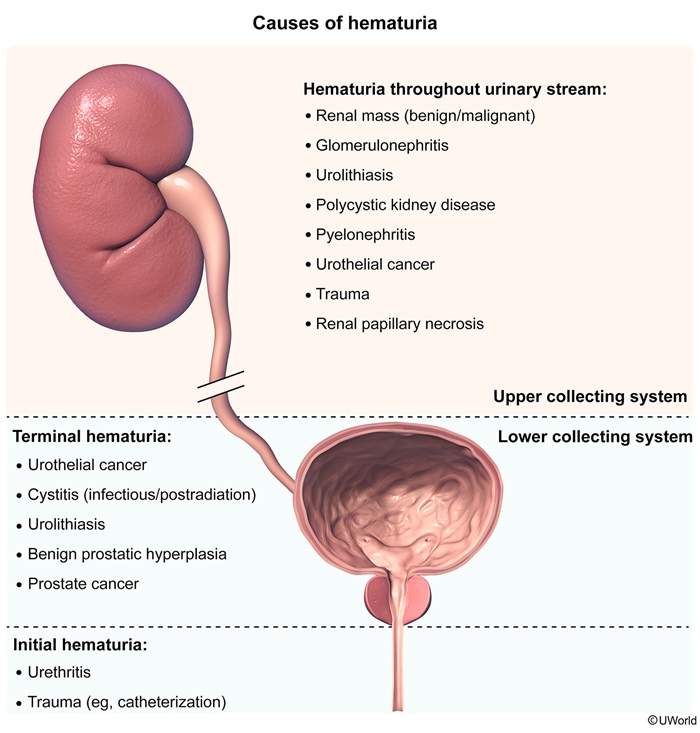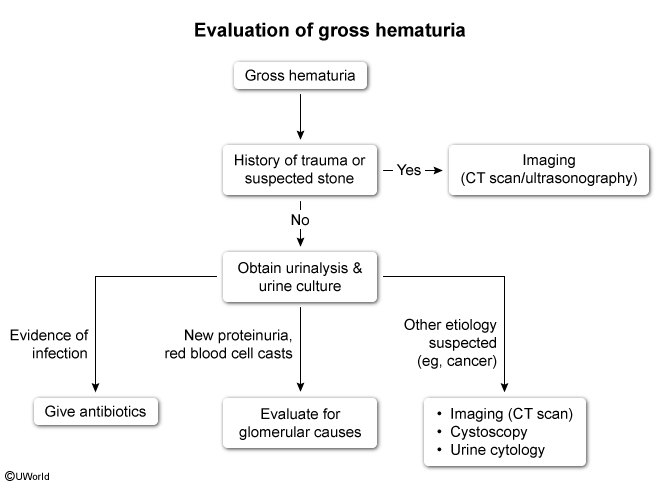Hematuria
Article Sections
Introduction
Hematuria, defined as the presence of red blood cells (RBCs) in the urine, can be gross (visible to the naked eye) or microscopic (detected only on microscopy). It is seen in a variety of conditions ranging from benign to severe. A systematic approach to evaluating hematuria includes confirming its presence, distinguishing glomerular from nonglomerular sources, and identifying the underlying cause through a targeted work-up.
Confirming hematuria
The initial step in evaluation of red or discolored urine is to confirm hematuria using urinalysis (UA). In cases of microscopic hematuria detected incidentally, it is important to confirm the finding with a repeat urinalysis to rule out transient or spurious causes. UA consists of dipstick analysis and microscopic examination.
Dipstick analysisUrine dipstick is a convenient initial screening tool for blood in the urine:
Continue Learning with UWorld
Get the full Hematuria article plus rich visuals, real-world cases, and in-depth insights from medical experts, all available through the UWorld Medical Library.
Figures


